Configurazione File CSV / XLSX
After uploading CSV or XLSX files to a file-based project, they require additional configuration before the system can import the content of these files.
To configure CSV or XLSX files in a file-based project, follow these steps:
- Open your project and go to Sources > Files.
- Clicca Configura vicino al file per aprire la finestra di configurazione.
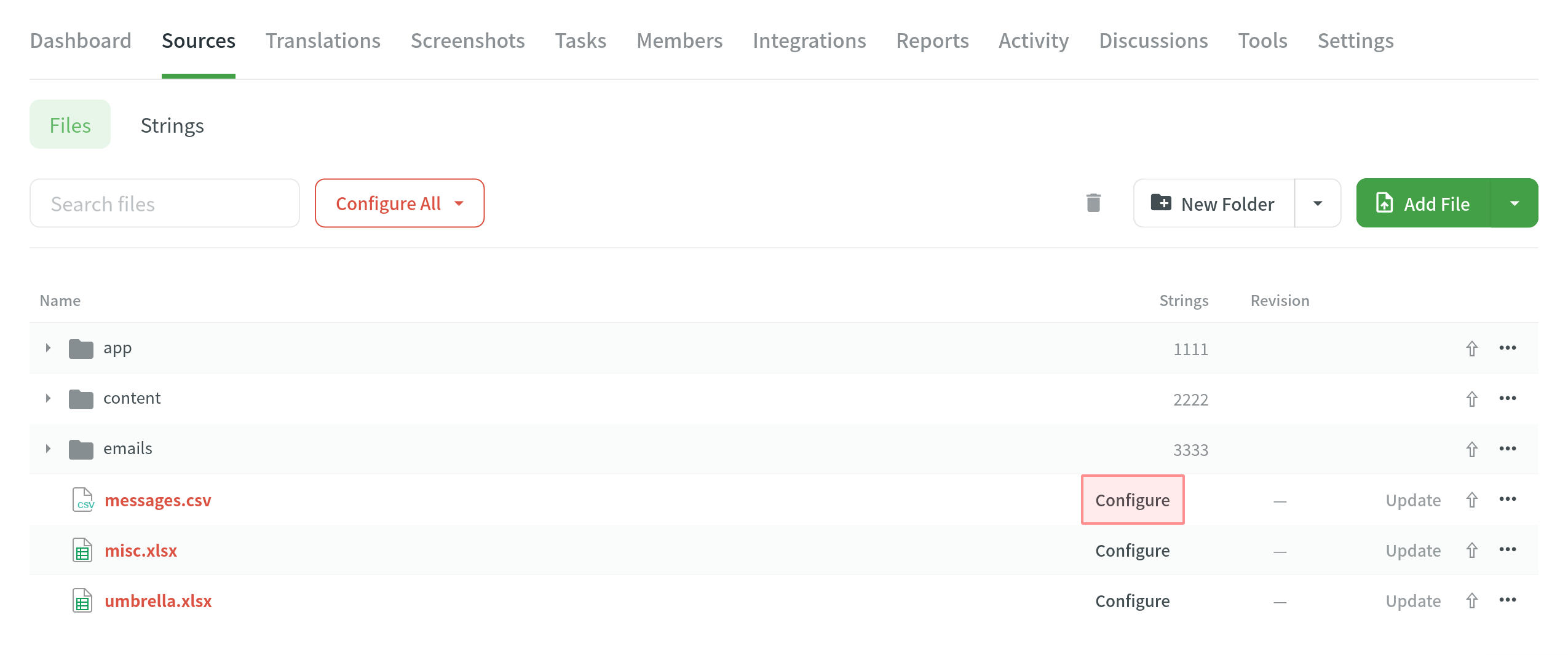
The configuration process is similar in a string-based project as well. CSV or XLSX files require additional configuration before they are uploaded to the project.
To configure CSV or XLSX files in a string-based project, follow these steps:
- Open your project and go to the Upload tab.
- Drag and drop files from your machine.
- Clicca Configura vicino al file per aprire la finestra di configurazione.
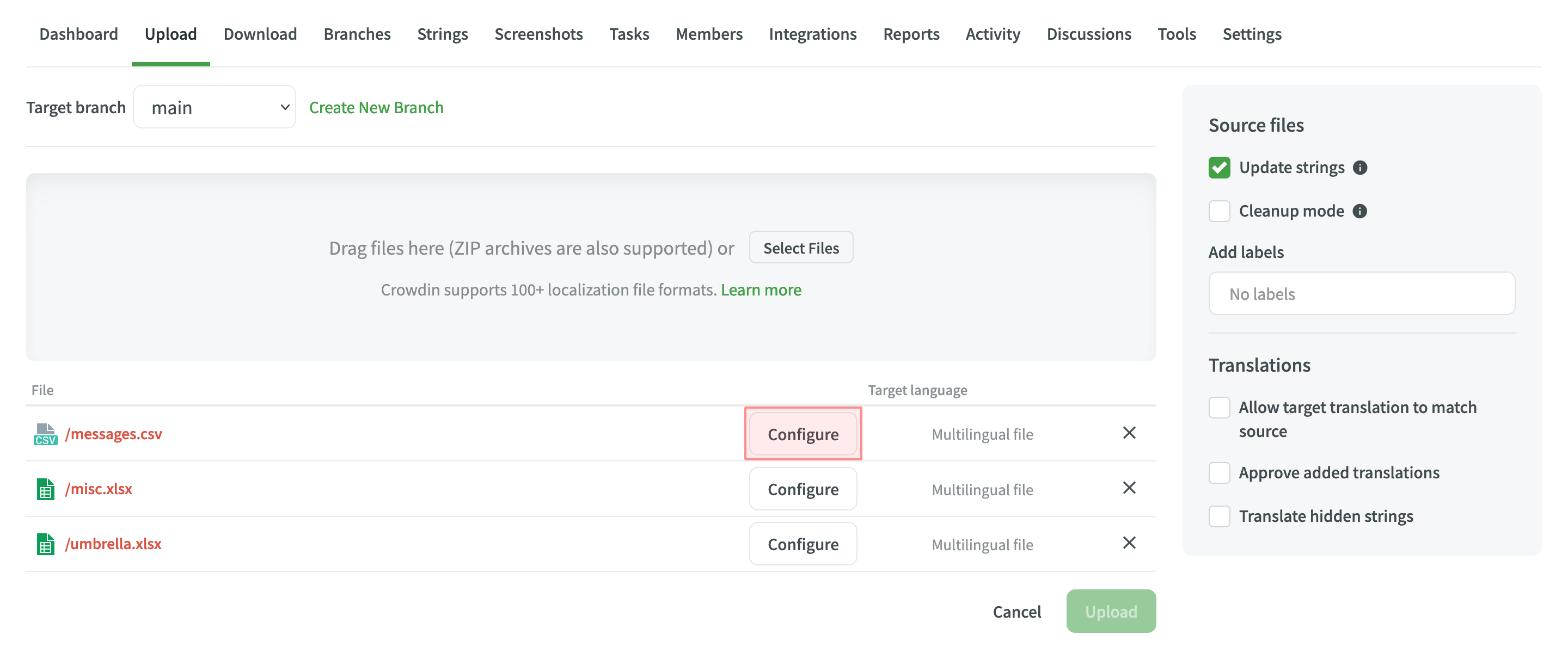
The same configurations mentioned in this article are also applicable to the TSV file format. The main difference between CSV and TSV files is that they use different delimiters between columns (i.e., commas in CSV and tabs in TSV).
Opzioni di Configurazione per i File XLSX
Configurando i file XLSX, avrai le seguenti opzioni:
-
Importa tutte le celle, importa ogni cella come una stringa sorgente separata. Inoltre, puoi usare la Segmentazione dei Contenuti per dividere i contenuti del file sorgente in pezzi di testo più brevi, principalmente frasi e paragrafi brevi. Questo è utile traducendo le unità di contenuti consistenti in diverse frasi perché sarà più facile tradurre i pezzi più piccoli di testo. Le eXchange delle Regole di Segmentazione (SRX) sono usate per la segmentazione automatica dei contenuti.
-
Configura le colonne per l’importazione, specifica l’ordine della colonna preferita.

Configurare Colonne per l’Importazione per i File XLSX e CSV
When configuring CSV or XLSX file with Configure columns for import option, you can specify the following column types:
- Key – Column contains string identifiers. Tipicamente un valore alfanumerico.
- Stringa sorgente – La colonna contiene le stringhe sorgente che dovrebbero esser tradotte.
- Stringa sorgente/Traduzione – La colonna contiene le stringhe sorgente, ma la stessa colonna sarà compilata con le traduzioni quando il file è esportato. When uploading existing translations, the values from this column will be used as translations.
- Traduzione – La colonna per le traduzioni risultanti aggiunte all’esportazione. All’importazione o caricando le traduzioni esistenti, il sistema controllerà questa colonna per le traduzioni esistenti e le carica al progetto.
- Contesto – La colonna contiene commenti o informazioni contestuali per le stringhe sorgente.
- Etichette – La colonna contiene etichette per le stringhe sorgente. Puoi aggiungere più etichette a ogni stringa, separandole con le virgole.
- Lungh. Massima – La colonna contiene i valori del limite max.lenght per le traduzioni delle stringhe.
- Non scelta – La colonna che sarà saltata all’importazione.
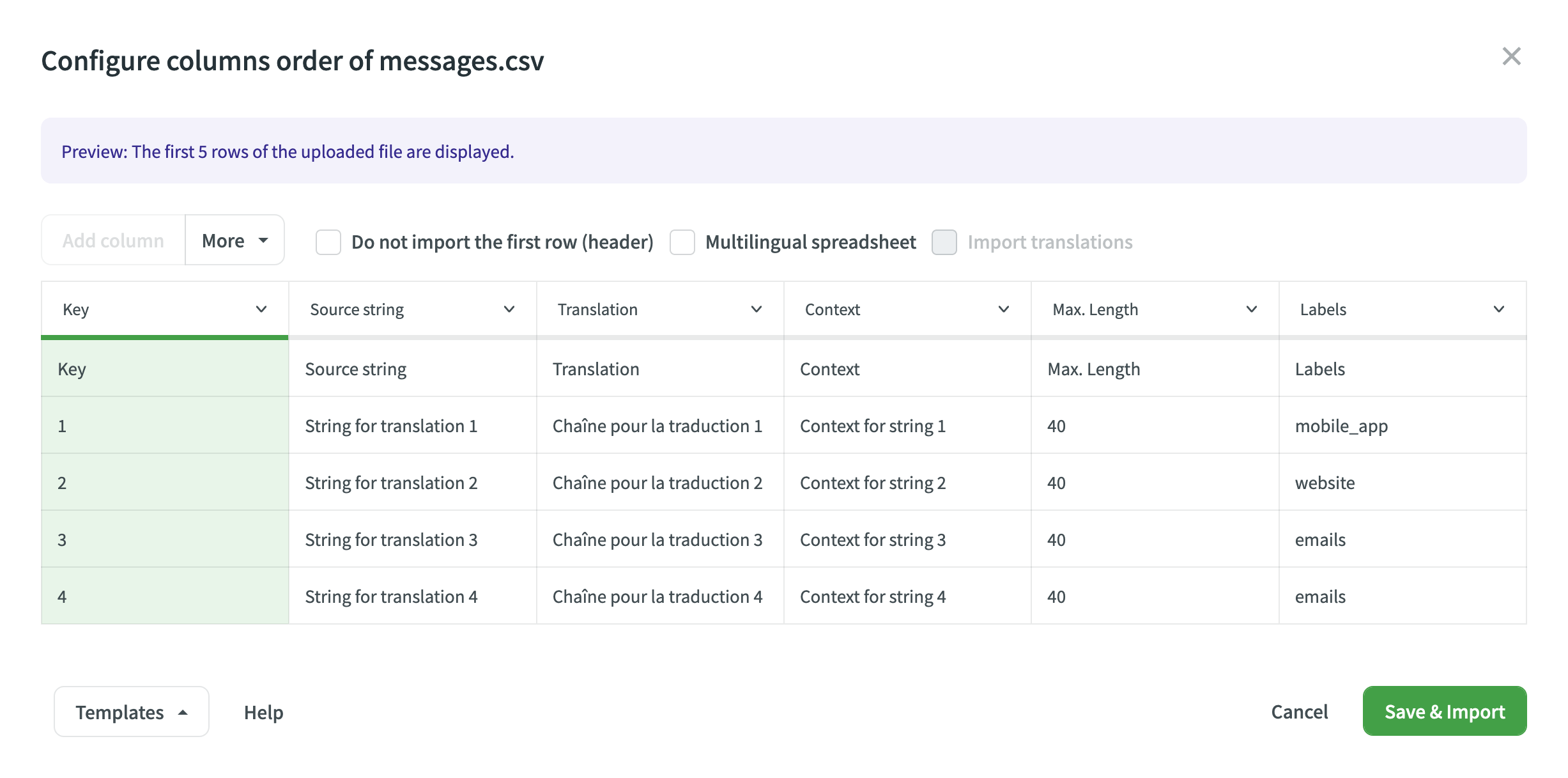
Automatic Column Identification
Once you open the configuration dialog for source files in CSV or XLSX formats, the system automatically detects the file scheme based on the column names specified in the first row. The identification is performed in a case-insensitive manner. Columns that weren’t detected automatically will be left as Not chosen for manual configuration. Automatic column identification is especially helpful when you upload multiple multilingual spreadsheets that contain many languages and additional columns (e.g., Context, Labels, Max. Length).
To get the most out of the automatic column detection, we recommend that you name the columns in your CSV or XLSX source files using the values displayed in the table below:
| Column type | Expected value |
|---|---|
| Key | identifier, key |
| Source String | source phrase, source_phrase, source string, source_string |
| Source String/Translation | source or translation, source_or_translation, source/translation |
| Traduzione | translation |
| Context | context |
| Labels | labels |
| Max. Length | max. length, max_length |
| Language (for multilingual files) | Language name (e.g., Ukrainian), Crowdin language code, Locale (e.g., uk-UA), Locale with underscore (e.g., uk_UA), Language code ISO 639-1 (e.g., uk), Language code ISO 639-2/T (e.g., ukr) |
By default, during scheme configuration, the system treats CSV and XLSX source files as monolingual. To autodetect file scheme for multilingual source files, follow these steps:
- Select Multilingual spreadsheet.
- Click More and select Detect Configuration.
Modelli di Configurazione
If multiple files have the same configuration scheme, save your current configuration as a template by clicking Templates > Save as template, then specify the template name and click Save. You’ll be able to apply the template to the newly imported files.
Intestazioni della Colonna
If you don’t want to translate the column headers, select Do not import the first row (header).
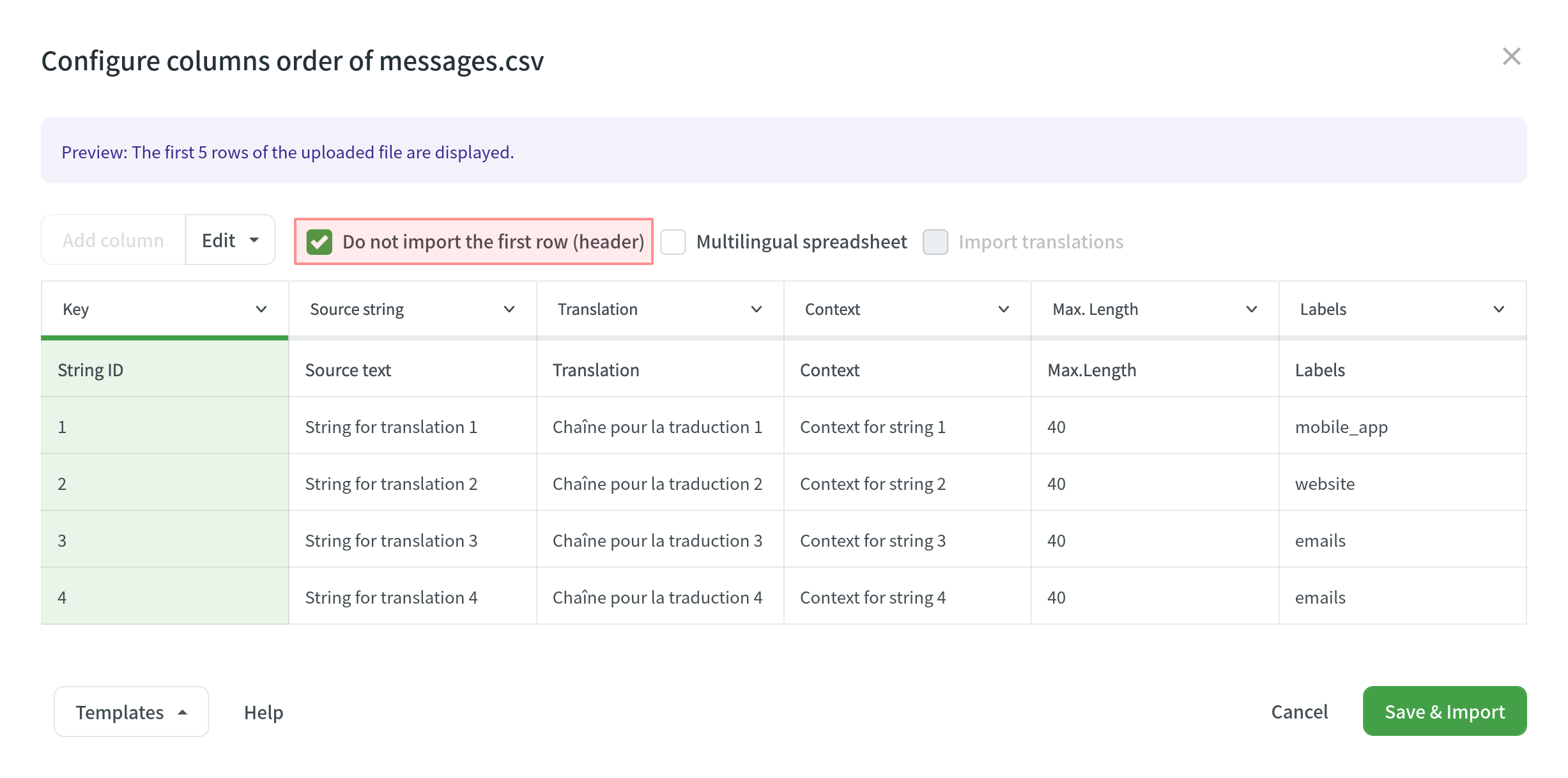
Ripristina la Configurazione del Foglio di Calcolo
If you’d like to start the spreadsheet configuration over, click More and select Reset Configuration.
Fogli di Calcolo Multilingue
If your file contains several columns with translations into different languages, select Multilingual Spreadsheet and map the languages to the appropriate columns.
By default, when you configure the multilingual spreadsheets, the Import translations option is selected. If you’d like not to import the existing translations from the file, you can clear this option.
If your multilingual source file doesn’t contain enough columns for all project target languages, click Add column. If your multilingual source file doesn’t contain enough columns for all project target languages, click Add column.
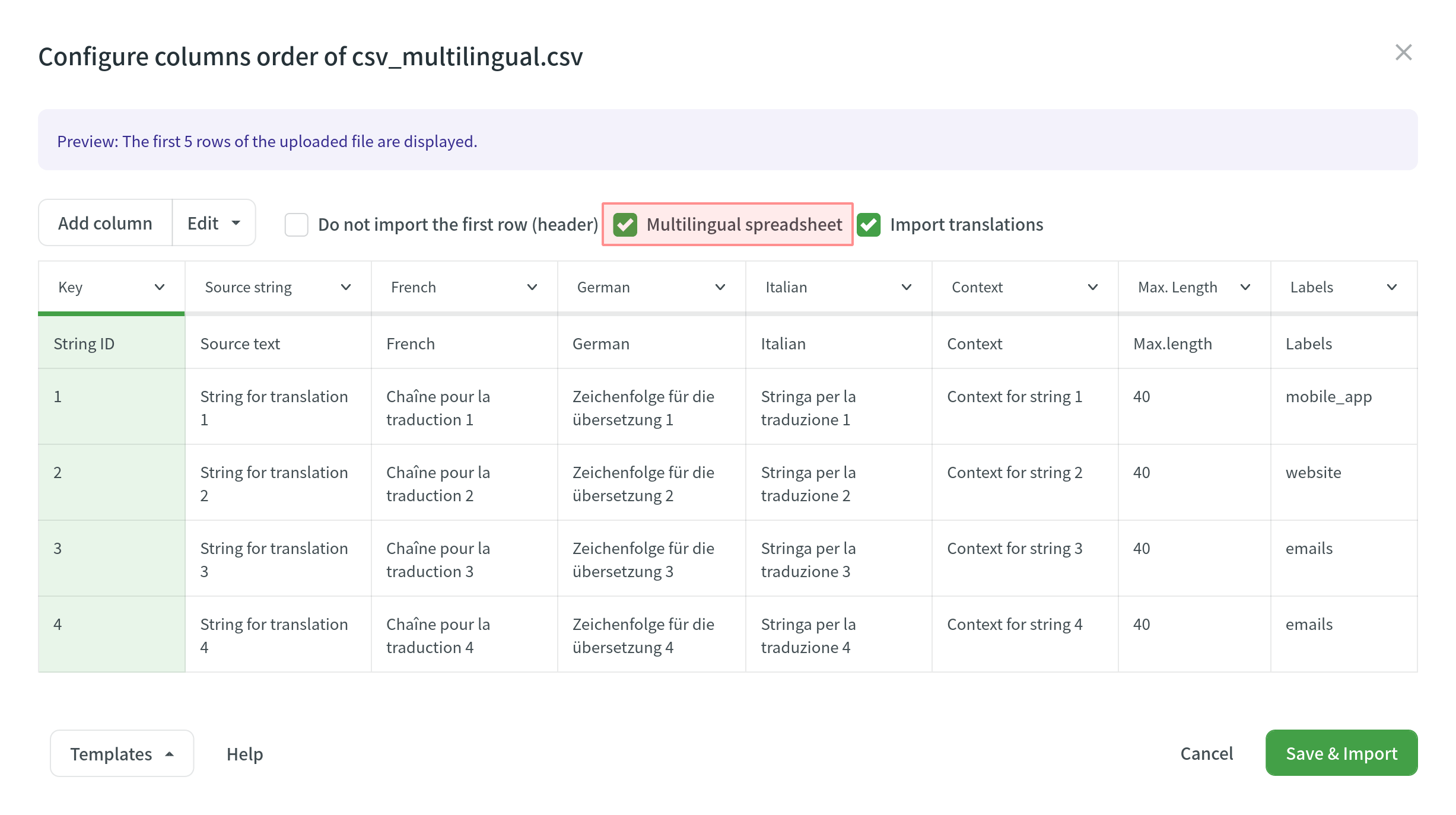
Configura Diversi File allo Stesso Tempo
To configure several selected CSV or XLSX files, right-click and select Configure files.
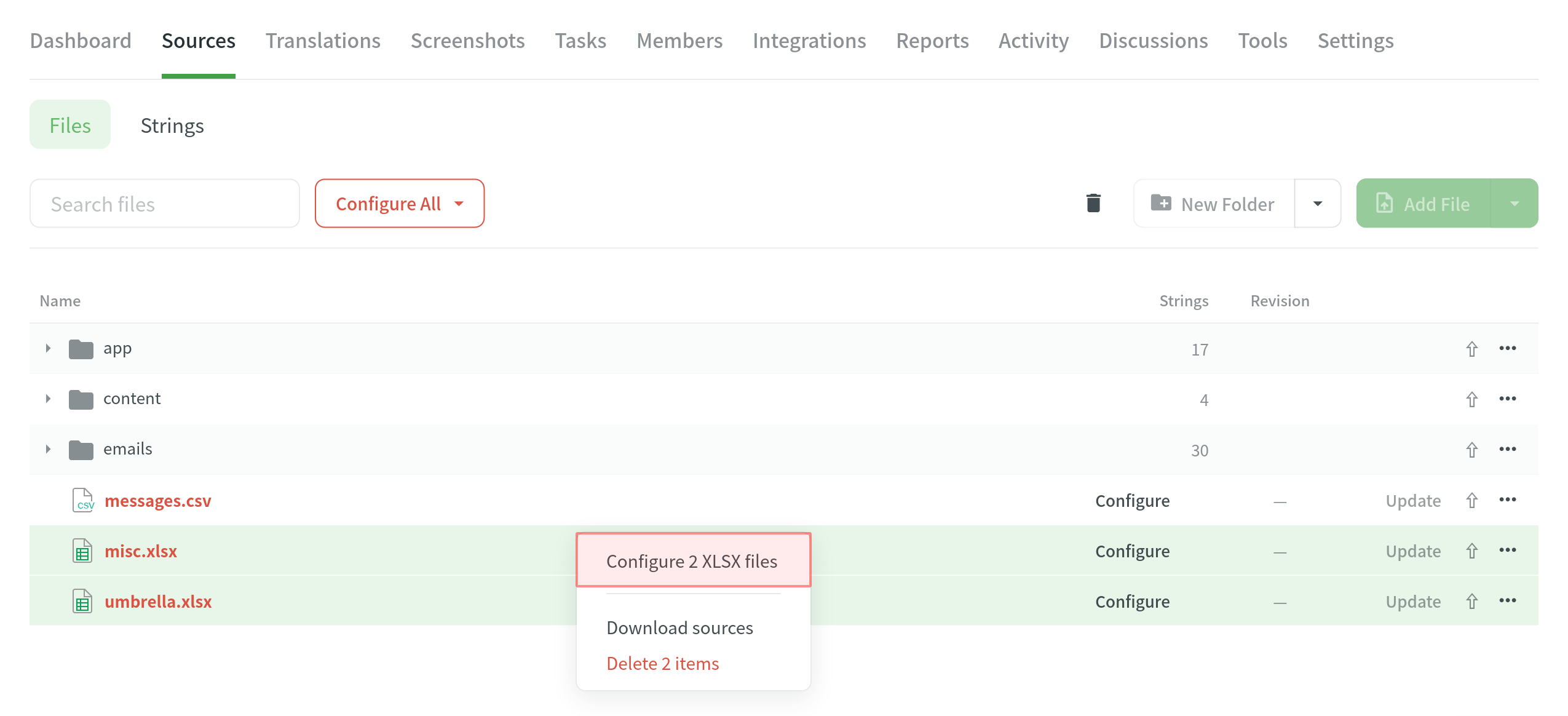
To configure all CSV or all XLSX files at once, click Configure All.
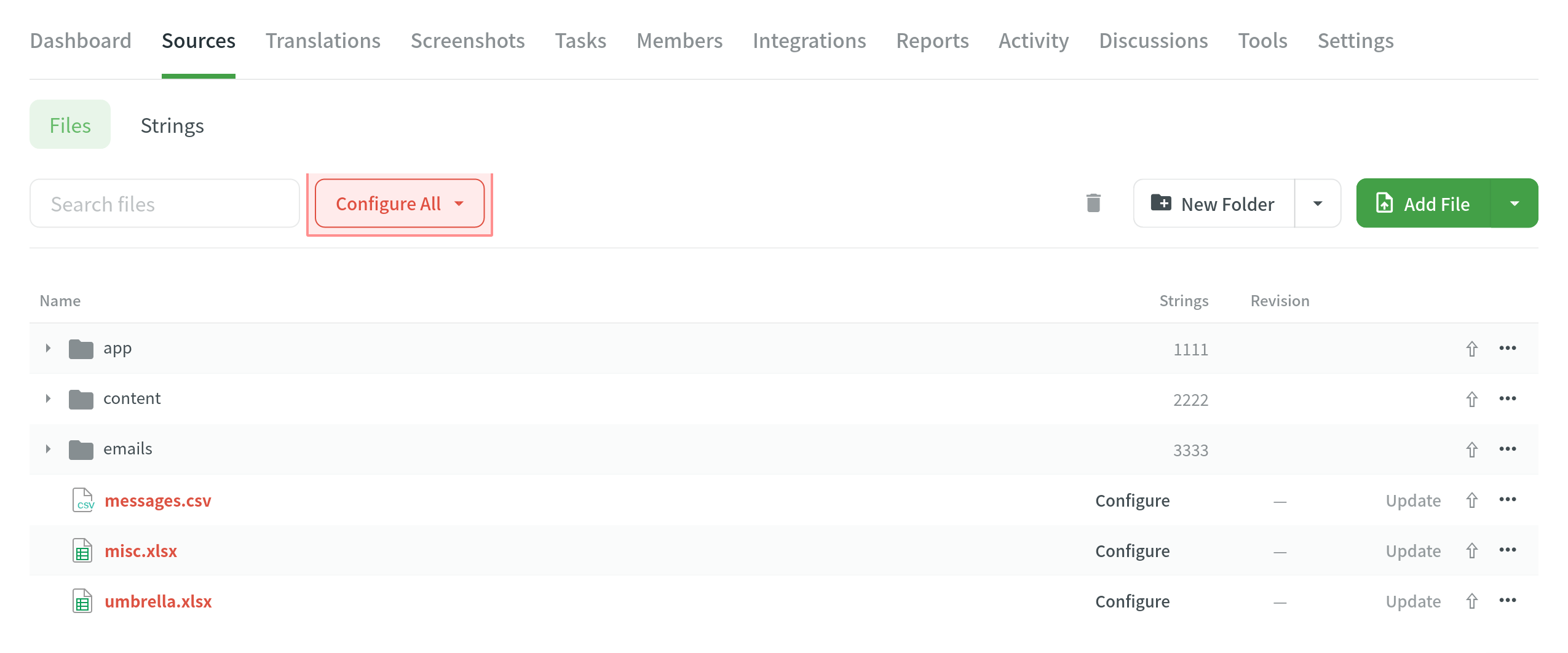
Nella finestra di configurazione, potrai passare tra i file selezionati all’anteprima e verificare se la configurazione applicata è corretta per tutti i file.
Changing Scheme for CSV and XLSX Files
You might want to update CSV or XLSX files and change the initially configured scheme. The scheme update might be needed when you add a new target language to your Crowdin project.
To change the scheme for your source file, follow these steps:
- Right-click on the needed files and select Change scheme.
- Select the new file on your machine.
- Set the new configuration/template for the file correspondingly.